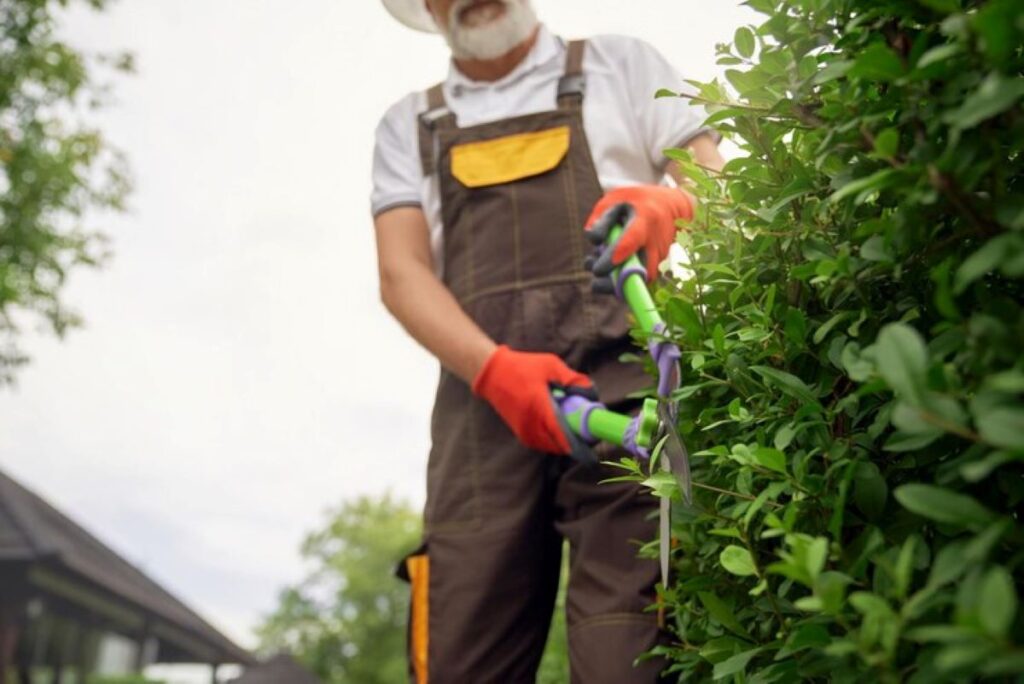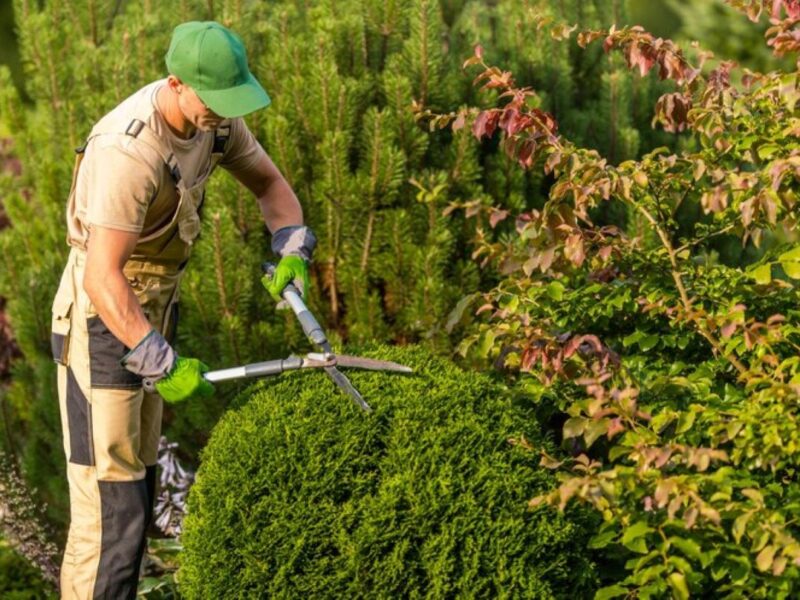Hedge trimming is an essential part of maintaining the overall appearance and health of your garden. However, to achieve the best results, it is crucial to trim your hedges at the right time. Timing plays a crucial role in hedge trimming because it affects the growth and overall health of the plants. In this article, we will discuss the importance of timing in hedge trimming, how seasonal changes affect your hedges, and provide expert tips for achieving perfect results.
Understanding the Importance of Timing in Hedge Trimming
Timing plays a significant role in hedge cutting because it can affect the growth and overall health of your hedges. When you trim your hedges at the right time, you can encourage healthy growth, maintain their shape, and enhance their aesthetic appeal.
The Science Behind Hedge Growth
Before we delve into the importance of timing, it’s essential to understand the science behind hedge growth. Hedges consist of multiple small branches that grow from the main stem. These branches grow from dormant buds, which are located at the base of the previous year’s growth. As the hedge grows, these dormant buds become active, resulting in new growth.
When you trim your hedges, you remove the active growth, which encourages the development of new branches from the dormant buds. This process helps maintain the density and shape of the hedge.
How Seasonal Changes Affect Your Hedges
Your hedges’ growth is influenced by seasonal changes, and understanding these changes is crucial for determining the best time to trim them.
In spring, hedges experience a burst of growth as they come out of their dormant state. It is generally recommended to avoid trimming your hedges during this period as it might disturb the new growth. Instead, wait until late spring or early summer when the active growth slows down.
Summer is when hedges typically reach their peak growth. During this time, you can trim your hedges to control their size and maintain their shape. However, avoid trimming too late in the season to give your hedges enough time to harden off before winter.
In autumn, hedges start to slow down their growth as they prepare for the dormant winter period. It is recommended to avoid heavy pruning during this time and instead focus on light trimming to tidy up the appearance of your hedges.
Winter is the dormant period for hedges, and it is generally not necessary to trim them during this time. However, if you notice any dead or damaged branches, it is advisable to remove them to keep the hedges healthy.
Now, let’s take a closer look at each season and explore the specific factors that influence hedge growth during these periods.
Spring: A Time of Renewal and Growth
As the days grow longer and the temperatures rise, hedges awaken from their winter slumber. Spring is a time of renewal and growth, as the dormant buds at the base of the previous year’s growth start to come alive. These buds, fueled by the increased sunlight and warmth, push out new shoots, adding lushness and vibrancy to your hedges.
During this period, it is crucial to resist the temptation to trim your hedges. The new growth is delicate and easily damaged, and pruning at this time can disrupt the natural growth process. Instead, allow your hedges to flourish and establish themselves fully before considering any trimming.
Summer: Harnessing Growth and Maintaining Form
As the days lengthen and the sun shines brightly, hedges enter their peak growth phase during the summer months. This is the time when you can harness the growth and maintain the desired shape of your hedges.
Regular trimming during summer helps prevent your hedges from becoming overgrown and unruly. By carefully shaping them, you can create clean lines and defined edges, enhancing the overall aesthetic appeal of your outdoor space.
However, it is important to time your trimming appropriately. Trimming too late in the season may leave your hedges vulnerable to frost damage in the upcoming winter months. Aim to complete any necessary trimming by mid to late summer, allowing sufficient time for the new growth to harden off and prepare for the colder weather ahead.
Autumn: Preparing for Dormancy
As the summer warmth fades away and the days become shorter, hedges start to wind down their growth in preparation for the dormant winter period. Autumn is a transitional season, where the focus shifts from promoting growth to maintaining the appearance of your hedges.
During this time, it is advisable to avoid heavy pruning that could stimulate new growth. Instead, opt for light trimming to tidy up any stray branches and maintain a neat and well-kept appearance. This will help your hedges stay in good shape throughout the winter months.
In conclusion, understanding the importance of timing in hedge trimming is crucial for promoting healthy growth, maintaining shape, and enhancing the overall beauty of your hedges. By considering the seasonal changes and the specific factors that influence hedge growth during each period, you can make informed decisions about when to trim your hedges, ensuring their long-term health and vitality.
Identifying the Best Time to Trim Different Types of Hedges
Not all hedges have the same growth patterns, so it’s essential to understand the specific requirements of different hedge types to determine the best trimming time.
Proper timing of hedge trimming is crucial to ensure their health and appearance. By knowing the growth habits of different hedge varieties, you can effectively plan your pruning schedule to maximize their beauty and vitality throughout the year.

Deciduous Hedges: When and Why to Trim
Deciduous hedges, such as beech and hornbeam, shed their leaves in winter and enter a dormant phase. The best time to trim deciduous hedges is during late winter or early spring before they start to produce new leaves. Trimming at this time helps promote healthy growth and maintain their shape.
When pruning deciduous hedges, it’s essential to use sharp, clean tools to make precise cuts. Avoid tearing or crushing the branches, as this can lead to damage and disease. Additionally, removing dead or diseased wood during trimming helps improve air circulation within the hedge, reducing the risk of fungal infections.
Evergreen Hedges: Timing Your Trimming Right
Evergreen hedges, such as boxwood and yew, retain their leaves throughout the year and have a more continuous growth pattern. For evergreen hedges, the best time to trim is during late spring or early summer when the new growth is starting to slow down.
While trimming evergreen hedges, pay attention to their natural shape and growth habits. Avoid cutting back into old wood excessively, as this can lead to sparse growth and an unattractive appearance. Instead, focus on shaping the outer foliage to maintain a dense and lush hedge structure.
Expert Tips for Achieving Perfect Results
Now that you understand the importance of timing and know when to trim different types of hedges, let’s explore some expert tips for achieving perfect results.
Trimming hedges is not just about cutting off excess growth; it’s an art that requires precision and care. To elevate your hedge trimming game, consider the following additional tips that can make a significant difference in the outcome of your landscaping efforts.
Tools and Techniques for Effective Trimming
Using the right tools and techniques is crucial for achieving clean and precise cuts. Invest in high-quality hedge trimmers that are specifically designed for the type and size of your hedges. Electric or battery-powered trimmers are generally preferred for their ease of use and maneuverability.
Before starting the trimming process, ensure that your trimmers are sharp and well-maintained. Dull blades can damage the hedge, leading to frayed edges and an uneven appearance. Clean your tools after each use to prevent the spread of diseases between plants.
When trimming, start from the bottom and work your way up, ensuring that the sides are trimmed vertically and the top is trimmed horizontally. This technique helps maintain the overall shape and symmetry of the hedge.
Maintaining the Health of Your Hedges Post-Trimming
After trimming your hedges, it’s essential to provide them with proper care to promote healthy growth and maintain their appearance. Regularly water your hedges, especially during dry periods, and apply a balanced fertilizer to provide essential nutrients.
Pruning stimulates new growth, so monitor your hedges closely and trim any unruly branches to encourage denser foliage. Avoid over-pruning, as it can weaken the plant and make it more susceptible to stressors such as extreme weather conditions.
Inspect your hedges regularly for signs of pests or diseases and take prompt action to prevent their spread. Additionally, consider applying a layer of mulch around the base of the hedges to retain moisture and suppress weed growth. Click here to get about cost of hedge trimming and what you need to know before hiring.
Common Mistakes to Avoid While Trimming Hedges
While trimming your hedges, it’s important to avoid common mistakes that can negatively impact their health and appearance.
Proper hedge trimming not only enhances the aesthetic appeal of your outdoor space but also contributes to the overall health and vitality of the plants. By following some key guidelines and steering clear of common pitfalls, you can ensure that your hedges thrive and flourish throughout the year.
Avoiding Over-trimming: The Potential Risks
Over-trimming your hedges can weaken them and lead to stunted growth. It’s essential to avoid reducing the overall size of the hedge significantly, as this can remove too much foliage and stress the plants. Instead, focus on light trimming to maintain their shape and encourage healthy growth.
When trimming your hedges, consider the natural form and growth pattern of the plant. Aim to enhance its natural beauty rather than imposing an artificial shape that may compromise its health. By striking the right balance between maintenance and preservation, you can promote robust growth and lush foliage in your hedges.

The Dangers of Incorrect Timing
Trimming your hedges at the wrong time can disrupt their growth cycles and result in undesirable outcomes. Avoid trimming during periods of active growth, as this can lead to excessive regrowth and make your hedges look untidy. Similarly, trimming too late in the season can leave your hedges susceptible to winter damage.
Before reaching for your pruning shears, take the time to familiarize yourself with the specific needs of your hedge species. Different plants have varying growth patterns and seasonal requirements, so it’s crucial to tailor your trimming schedule accordingly. By aligning your pruning activities with the natural rhythms of your hedges, you can promote optimal health and vitality in these green companions.
Frequently Asked Questions About Hedge Trimming
Here, we address some frequently asked questions about hedge trimming to provide you with further insights.
Addressing Your Concerns About Hedge Trimming
Many homeowners have concerns about trimming their hedges, including whether it will harm the plants or affect their future growth. It’s important to understand that proper hedge trimming techniques, performed at the right time, can benefit the health and appearance of your hedges without causing harm.
Debunking Common Hedge Trimming Myths
There are several myths surrounding hedge trimming that can lead to confusion. One common myth is that trimming hedges too much will make them grow faster. In reality, excessive trimming can weaken the plants and result in slower growth. Understanding the facts behind these myths can help you make informed decisions about trimming your hedges.
By understanding the importance of timing in hedge trimming, identifying the best time to trim different types of hedges, and following expert tips, you can achieve perfect results and maintain the health and beauty of your hedges. Avoid common mistakes and address any concerns you may have to ensure successful hedge trimming. With proper care and attention, your hedges will thrive and enhance the overall appeal of your garden.
